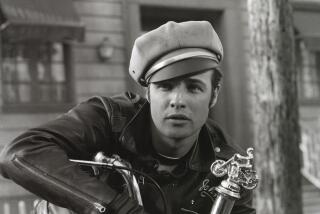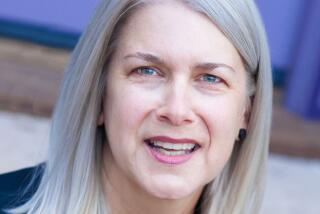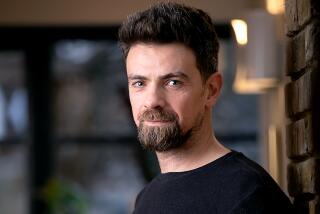The Envelope: For Nick Hornby, adapting ‘Wild’ was a fast-paced uphill hike
My “Wild” journey — and, seeing as I never set foot outside my north London office for almost the entire length of it, I should really stop using the title as an adjective — began with a review of Cheryl Strayed’s memoir in the New York Times. The review kicked off with an arresting sentence: “It’s not very manly, the topic of weeping while reading.” And it ended with another one: “The cumulative welling up I experienced during ‘Wild’ was partly a response to that too infrequent sight — that of a writer finding her voice, and sustaining it, right in front of your eyes.” I wanted very badly to read this book.
I think I may have skipped a chunk of the review, though, the stuff in between, because when “Wild” arrived through the post, I noted with alarm that a pair of hiking boots featured prominently on the front cover. This was a book about hiking? I’m not a hiker. I do go outside, sometimes, but only when strictly necessary, to travel from one urban amenity to another. I thought I’d read the first few pages, though, if only to justify the purchase, postage and packing. Twenty-four hours later, I was, like Dwight Garner of the New York Times, in a mess. I was also convinced that I was the right person to adapt “Wild” for the screen.
A lawyer might describe this conviction as unsafe. There was the hiking thing, and the English thing, and the man thing: “Wild” has gone on to become a contemporary feminist classic and a long time ago, back in the 20th century, I wrote a couple of novels that became associated with a certain kind of masculinity. And the material wasn’t straightforward. The flashbacks were complicated and would need reordering, I felt, and if they were to work dramatically, I needed to find a way of externalizing Cheryl’s inner monologue.
Set against that, I felt I understood the book. It wasn’t about hiking, not to me. It was about grief, families, ambition, rage, disappointment and hope, and it was written with an urban liberal-arts sensibility that succeeded in placing anyone with the same set of values right there on the trail with Cheryl, screwed up, unprepared, determined to succeed in her ambition simply because there are no viable alternatives anywhere else.
And tonally, the book was a gift, piercingly honest, deeply painful, but funny and self-deprecating too. The great thing about adaptation is that you can, if you’re lucky, get to work on material that you couldn’t have generated yourself but that nevertheless speaks deeply to you. I had recently written two movies about young women (“An Education” and the upcoming “Brooklyn”); I hoped that those scripts and a few ideas about how to approach “Wild” might be enough to persuade Cheryl and the producers, Bruna Papandrea and Reese Witherspoon (who also stars), to give me a shot.
“Wild” moved toward production much faster than any film I’ve ever been involved with. Usually scripts get written slowly, by writers who know there’s no hurry, and then kick around for another four or five years, and the glacial pace can drive you insane. But I first met Bruna and Reese to talk about the project in October 2012, and found myself promising a first draft within three months; 10 months after delivery of that first draft, the movie had wrapped.
Moving at this speed meant a particularly intense pre-production period. Jean-Marc Vallée, the French Canadian director of “Dallas Buyers Club,” climbed aboard just a couple of months before shooting, and he needed every second available to put his stamp on the material. Jean-Marc would Skype me as soon as he got out of bed, from Canada, or L.A., or — just before he started shooting — from Oregon, and we talked about every scene, every page, every line. And when we’d got to the end, we went back to the beginning again. This is what happens in development, of course, but usually over the course of years, not days. It nearly killed me, but the torture was, of necessity, brief. I didn’t even meet Jean-Marc in person until we all met up at the Toronto Film Festival to promote the film.
Making a movie, then, turns out to be surprisingly easy; I’d just been doing it wrong for the last 20 years or so. All you need is a bestselling book that people are passionate about, an A-list star who owns the rights to said book and is committed to starring in the adaptation as soon as possible, and a director who has just come off an Oscar-winning movie. D’oh.
More to Read
From the Oscars to the Emmys.
Get the Envelope newsletter for exclusive awards season coverage, behind-the-scenes stories from the Envelope podcast and columnist Glenn Whipp’s must-read analysis.
You may occasionally receive promotional content from the Los Angeles Times.






